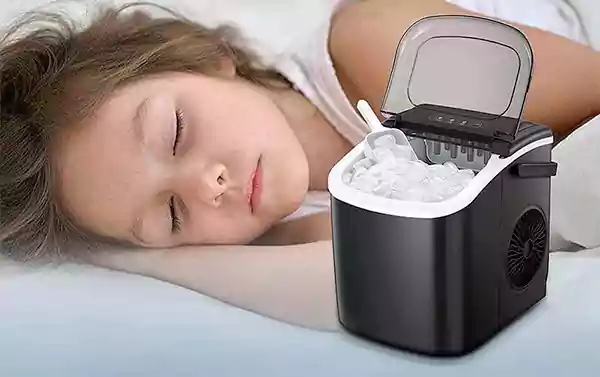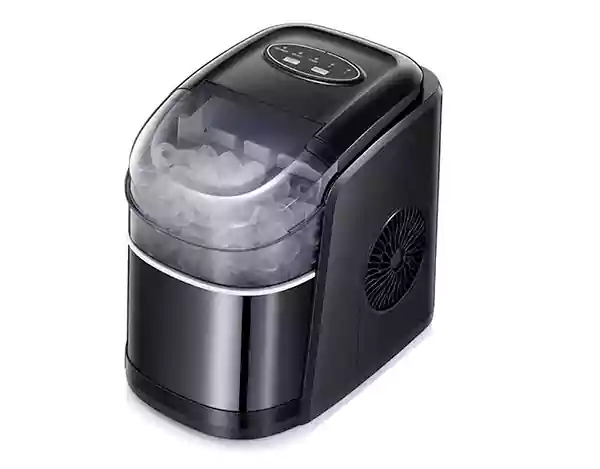What you need to descale an ice maker is easy to get. Look through your cabinets, and you will find vinegar, water, a towel, soap, and an old toothbrush.
In my experience, it’s a simple task anyone can do. So, you don’t need to be a Pro handyman or hire a cleaning expert to get it done. And should your ice machine stop working due to poor maintenance or any other reason, visit Kismile for replacements. They are home for quality home appliances.
That said, hang around as I show you how to clean an ice maker machine like a CIMS-certified expert. You’ll also discover the tools and supplies you need to do a good job. Ready? Let’s go!

So, it’s like this.
A dirty ice maker will not show signs until the dirt has accumulated to a critical level. By this time, the machine will produce one or more of these:
If you observe any of these, please clean the machine asap and visit the hospital for a general medical check-up.
Think I’m exaggerating?
Well, this is why cleaning experts say that the ice maker should be cleaned twice or thrice in 9 months and, in the worst possible scenario, once in 6 months.

It’s right there on the list of the easiest cleaning activities in the world.
And contrary to what experts say, we think it’s better to clean this machine once every month.
That way, you and your guests can enjoy iced drinks without fear of health problems like diarrhea.
To top it off.
You’ll never run out of refreshing, neat, and sparkling ice cubes.
Get the following tools and supplies:
Here’s an important disclaimer, so your machine doesn’t get damaged.
Please read the user manual for the best cleansing recommendation before continuing with this guide. (It shouldn’t be any different from the one described here)

This rule of thumb applies to all electrical appliances. Make sure to disengage the ice machine from the power source, so it doesn’t dispense ice in the middle of cleaning.
And even though you’re not at risk of electrical shocks, it’s better to be safe than sorry.
If your ice maker is attached to the fridge, this could be the time to clean both compartments.
Remove all items from the fridge as you prepare to clean it. Often the funky smell in your fridge is the reason for your foul-smelling ice cubes.
Should you decide to clean the ice machine while it’s still plugged in?
Ensure you disconnect and drain the water inlet valve to stop water from entering the ice machine. Unless you want the machine to keep making ice as you clean it.
Mix a cup of distilled water with vinegar inside a spray bottle. Alternatively, use an anti-microbial cleansing solution specific to ice machines.
Detach all removable parts – scoop, bin, water filter – in the machine so you can wash them with a sponge and soap. (Please follow the manufacturer’s guide to avoiding damage)
Spray the interior of the ice maker with your preferred cleaning solution.
And use a clean napkin to wipe all areas except for hard-to-reach places like ice chutes, where a moist cotton swab is more efficient for descaling the gunk buildup.
Over time the water filter will clog up from the buildup of mineral deposits.
When this happens, the machine usually produces small-sized, contaminated ice cubes.
According to these experts, “the water filter should be replaced once every 6 months” to ensure optimal functionality.
Suppose that schedule looks impossible for you. Consider replacing the old filter with a new one every time you clean the ice machine.
Use a clean towel to dry the machine inside out or allow it to air dry.
If your ice machine is a standalone appliance, pour the vinegar solution inside the ice maker so the cleansing agent’s deep-cleansing effect completely removes the gunk in the ice chute.
Switch on the ice maker.
Let it run its course over 4 to 5 cycles. We expect all the odor and contaminants to be gone from these machine runs.
Only use the ice produced from the 5th or 6th cycle.

Either is fine. The only problem with using vinegar solution is getting the measurement right.
An equal amount of vinegar and distilled water will make the perfect mixture. And even if the vinegar is excessive, you can get rid of its effect by running the ice maker over as many cycles as required to remove the aftertaste of vinegar in the ice cubes.
Distilled with water is free of hard water minerals like calcium and magnesium that can cause critical damage to the components of the ice machine.
